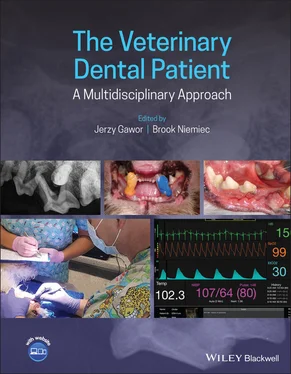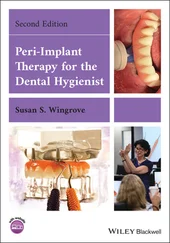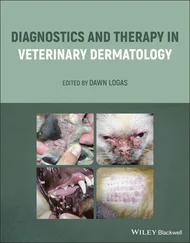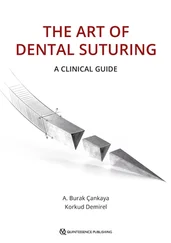Antimicrobial products 10 are also available (see later). They improve plaque and gingivitis control when used in combination with brushing, and should be considered especially in high‐risk patients or in cases of established periodontal disease (Overholser et al. 1990; Maruniak et al. 1992; Eaton et al. 1997; Hase et al. 1998; Hennet 2002; Stratul et al. 2010). Human toothpastes and products that contain baking soda should be avoided as they typically contain detergents and fluoride, which may cause gastric upset or other issues if swallowed (Wiggs and Lobprise 1997; Niemiec 2008).
5.3.4.1.3 Brushing Technique
Note that the ideal technique may only be possible in the most tractable patients. Clients should be encouraged to work toward this level of care, but to accept any degree of brushing as successful ( Figure 5.6). Forcing home care on a patient is counterproductive and may decrease the client–animal bond (Holmstrom et al. 1998). Furthermore, coercing clients may drive them away from your practice (Holmstrom et al. 1998). Therefore, it is important to understand your clients and patients and tailor your recommendation based on the situation.
The keys to achieving success with home tooth brushing are as follows (Niemiec 2013):
Start Early: Young patients are more amenable to training (Holmstrom et al. 1998).
Go Slow: Start with just holding the mouth, then progress to a finger, and finally start brushing slowly.
Be Consistent: Make tooth brushing a routine.
Make it a Positive Experience: Using food, treats, hair brushing, or playtime as a reward will greatly increase the likelihood of acceptance.
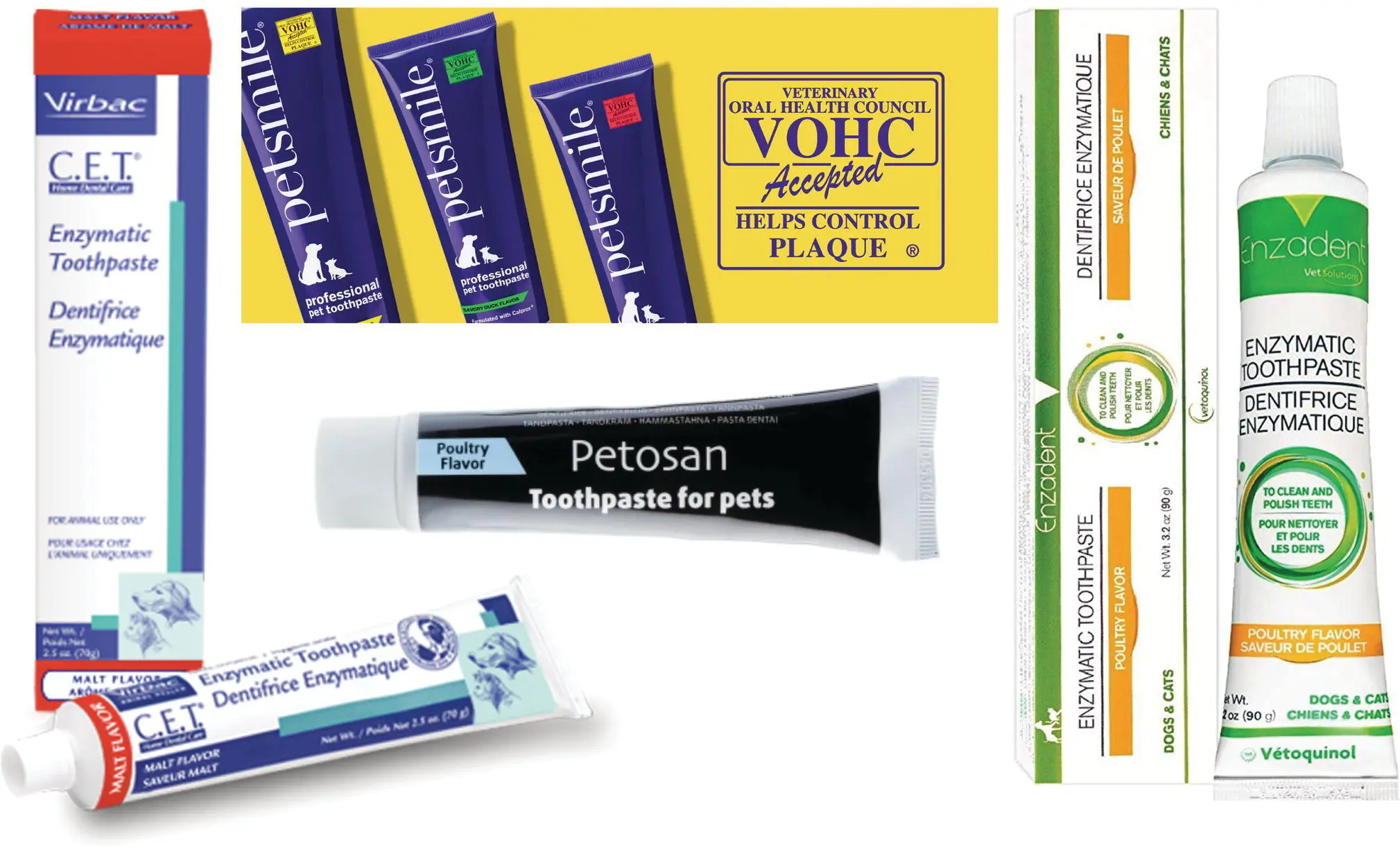
Figure 5.5 Selection of toothpastes.

Figure 5.6 Teaching tooth brushing should be gradual and gentle.
Source: Emilia Klim.
However, it is important to ensure that the patient's temperament is amenable for this process. Advise your clients that getting bitten is not worth it (Holmstrom et al. 1998).
The ideal tooth brushing technique begins with the brush at a 45° angle to the long axis of the tooth. The brush should be placed at the gingival margin and moved along the arches utilizing a rotary motion. The buccal/labial surfaces of the teeth are the most accessible, and fortunately are the most important, as they generally have more calculus accumulation and gingival inflammation (Niemiec 2013). Pet owners should not attempt to open their pet's mouth, especially early on ( Figure 5.7). Most animals greatly dislike their mouth being opened, and it will likely decrease the chances of their accepting the procedure. Clients should be instructed to begin by working toward effectively brushing the buccal surfaces of the teeth with the mouth closed. The distal teeth may be cleaned by gently inserting the brush inside the cheek, relying on tactile feel to achieve proper positioning.
If the patient is amenable, the client may progress to caring for the palatal/lingual surfaces of the teeth. This is critical if periodontal therapy/surgery has been performed on them, which is most common in cases of deep pockets on the palatal surfaces of the maxillary canine teeth. The best and safest way to open the mouth is to place the thumb of the nondominant hand just behind the mandibular canines. This allows for some leverage, and is also the safest place in the mouth for the finger to rest.
Frequency of brushing is a controversial subject. Once a day is the gold standard, as this level of care is required to stay ahead of plaque formation (Wiggs and Lobprise 1997; Niemiec 2008; Harvey et al. 2015). Furthermore, every‐other‐day brushing has been shown to be ineffective at gingivitis control (Gorrel and Rawlings 1996; Harvey et al. 2015). Three days a week is considered the minimum frequency for patients in good oral health (Tromp et al. 1986a,b). Brushing once a week is not considered sufficient to maintain good oral health (Niemiec 2013; Harvey et al. 2015). For patients with established periodontal disease (even gingivitis), daily brushing is required to maintain oral health, and twice daily may be recommended (Corba et al. 1986a,b; Tromp et al. 1986a,b; Gorrel and Rawlings 1996; Wiggs and Lobprise 1997; Niemiec 2008; Harvey et al. 2015). Finally, consistency with home care is critical. If brushing is suspended for as little as 30 days, gingival inflammation will return to the same level as in patients who have never had home care (Ingham and Gorrel 2001).
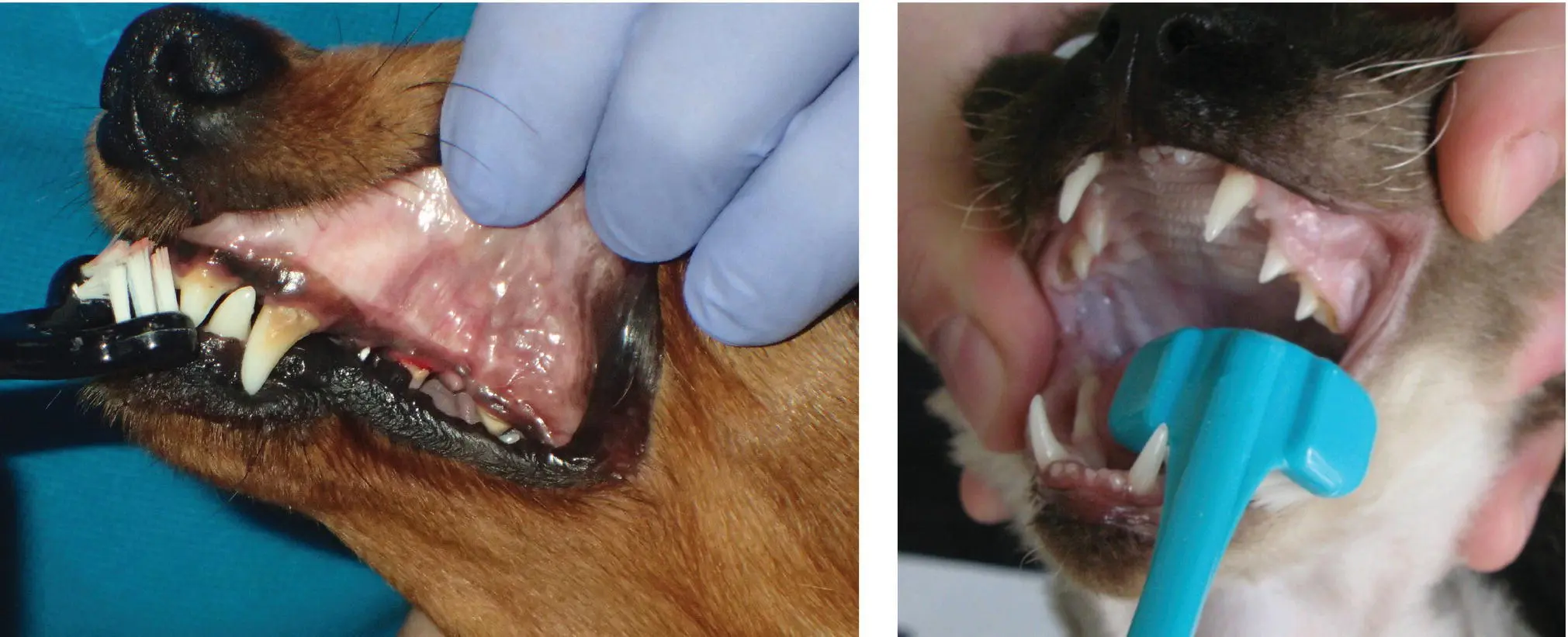
Figure 5.7 Avoid wide opening of the mouth when teaching tooth brushing.
5.3.4.1.4 Antiseptic Rinses
The other option for active home care is the application of antiseptic/antiplaque solutions. The traditional antiseptic of choice is chlorhexidine (CHX). 11 , 13 CHX disrupts the bacterial cell walls and penetrates the cells, creating a precipitation of the cytoplasm (Jenkins et al. 1988). It is an excellent product for oral disinfection, for several reasons:
There is no known method of bacterial resistance (Robinson 1995; Roudebush et al. 2005)
It has a quick onset and minimal systemic uptake (Salas Campos et al. 2000)
It is very safe (Robinson 1995)
It maintains antiseptic effects for up to seven hours after application (substantivity) (Bonesvoll 1977; Cousido 2009; Tomás 2009)
It has been shown in numerous studies to decrease gingivitis if applied correctly and consistently (Hull and Davies 1972; Hamp and Emilson 1973; Hamp et al. 1973; Tepe et al. 1983; Overholser 1990; Maruniak 1992; Eaton et al. 1997; Hase et al. 1998; Hennet 2002; Kantmann 2005; Stratul 2010).
There are two minor concerns with the use of CHX. First, it lacks palatability, which may hinder home care efforts (Holmstrom et al. 1998). Second, chronic use has been shown to cause dental staining (Holmstrom et al. 1998; Olympio et al. 2006). However, this staining is reversible, can be polished off, and has not been reported in an animal patient.
Proper application requires only a small amount of the solution. Ideally, the rinse should be directly applied to the surface of the teeth and gingiva, but getting it between the cheek and teeth is often the best that can be done in practice.
An additional option for home plaque control is the use of soluble zinc salts, which have been shown to decrease viable plaque biomass (Wolinsky et al. 2000). One veterinary‐labeled oral zinc ascorbate gel 14 has been proven to decrease plaque and gingivitis (Clarke 2001) ( Figure 5.8). It is also tasteless, which should improve acceptance, especially in cats. Finally, it contains ascorbic acid, which supports/induces collagen synthesis (Booth and Uitto 1981; Murad 1981; Pinnel et al. 1987; Holmstrom et al. 1998), potentially improving healing following dental scaling and oral surgery.

Figure 5.8 Indirect (with the use of fingerbrush) application of Maxiguard in a cat's mouth.
5.3.4.1.5 Barrier Sealant
A final option for active home care is the application of a barrier sealant 15 ( Figure 5.9). This product works by changing the electrostatic charge of the teeth and so creating a hydrophobic surface that prevents plaque attachment (Homola and Dunton 1999), decreasing the accumulation of plaque and calculus (Gengler et al. 2005). A review of this product using evidence‐based means supports the use of its professional application, but not its home care version (Roudebush et al. 2005). Therefore, this product may be most effective in the postoperative phase, until the mouth is healed, inflammation resolves, and a more established means of home care (such as brushing) can be instituted.
Читать дальше
